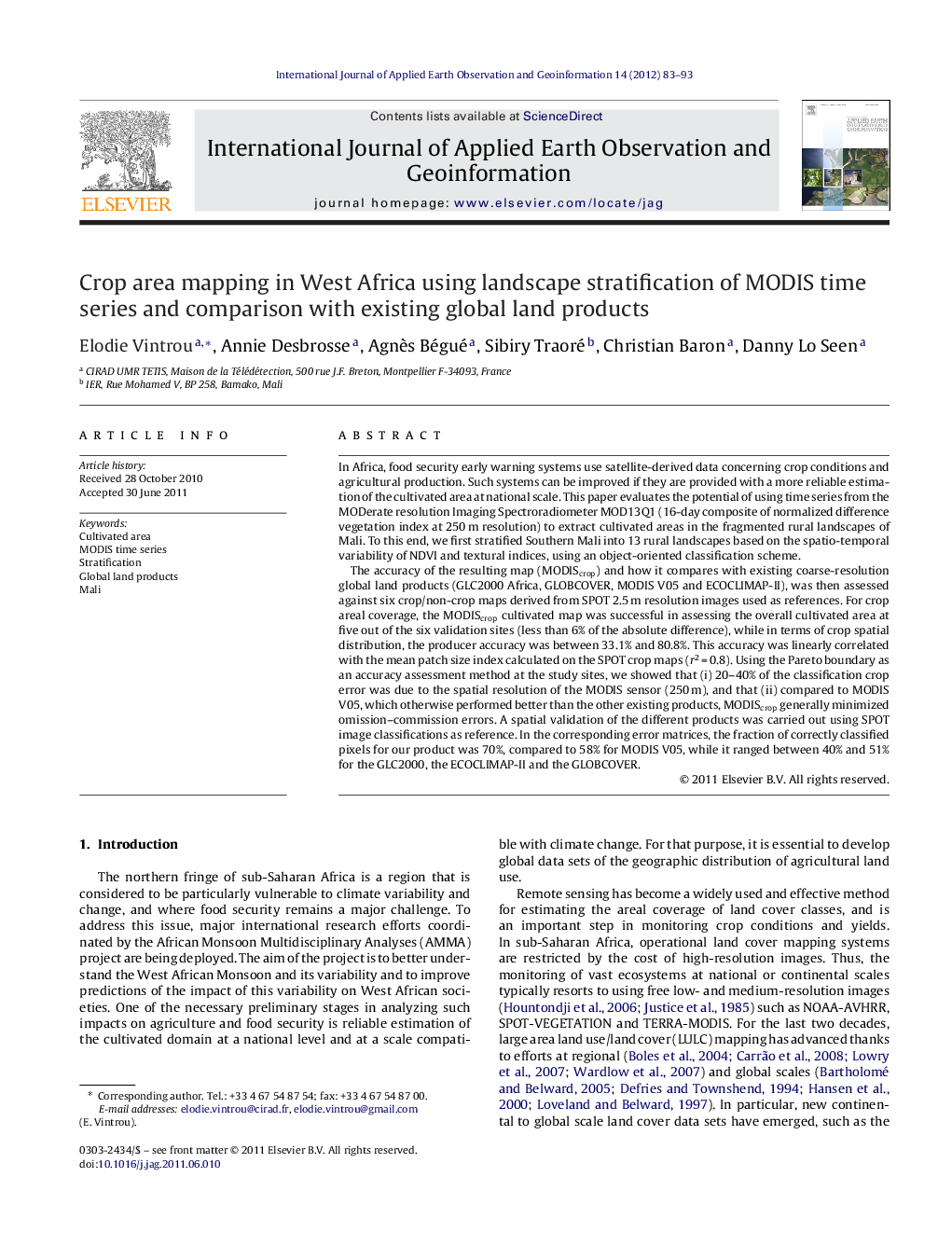| کد مقاله | کد نشریه | سال انتشار | مقاله انگلیسی | نسخه تمام متن |
|---|---|---|---|---|
| 4465037 | 1621846 | 2012 | 11 صفحه PDF | دانلود رایگان |

In Africa, food security early warning systems use satellite-derived data concerning crop conditions and agricultural production. Such systems can be improved if they are provided with a more reliable estimation of the cultivated area at national scale. This paper evaluates the potential of using time series from the MODerate resolution Imaging Spectroradiometer MOD13Q1 (16-day composite of normalized difference vegetation index at 250 m resolution) to extract cultivated areas in the fragmented rural landscapes of Mali. To this end, we first stratified Southern Mali into 13 rural landscapes based on the spatio-temporal variability of NDVI and textural indices, using an object-oriented classification scheme.The accuracy of the resulting map (MODIScrop) and how it compares with existing coarse-resolution global land products (GLC2000 Africa, GLOBCOVER, MODIS V05 and ECOCLIMAP-II), was then assessed against six crop/non-crop maps derived from SPOT 2.5 m resolution images used as references. For crop areal coverage, the MODIScrop cultivated map was successful in assessing the overall cultivated area at five out of the six validation sites (less than 6% of the absolute difference), while in terms of crop spatial distribution, the producer accuracy was between 33.1% and 80.8%. This accuracy was linearly correlated with the mean patch size index calculated on the SPOT crop maps (r2 = 0.8). Using the Pareto boundary as an accuracy assessment method at the study sites, we showed that (i) 20–40% of the classification crop error was due to the spatial resolution of the MODIS sensor (250 m), and that (ii) compared to MODIS V05, which otherwise performed better than the other existing products, MODIScrop generally minimized omission–commission errors. A spatial validation of the different products was carried out using SPOT image classifications as reference. In the corresponding error matrices, the fraction of correctly classified pixels for our product was 70%, compared to 58% for MODIS V05, while it ranged between 40% and 51% for the GLC2000, the ECOCLIMAP-II and the GLOBCOVER.
► In West Africa, high discrepancy between the global products in terms of cropped area.
► NDVI and texture-based landscape stratification improves MODIS crop mapping.
► Landscape fragmentation is responsible for 20–40% of MODIS crop class errors.
► The crop producer accuracy is linearly related to the mean crop patch size index.
Journal: International Journal of Applied Earth Observation and Geoinformation - Volume 14, Issue 1, February 2012, Pages 83–93